Owning an animal is a responsibility. Both moral and legal. The main responsibilities of a pet owner are established at the federal level. Owners must take care of their pets, clean up after them for walks, make sure that they do no harm to anyone, and also you should take their dogs to the vet from time to time.
Because of a canine’s survival instinct, dogs will appear healthy. Pet parents must be alert and mindful of the slightest changes in their dogs. As a dog owner, you know your pup better than anyone else, so if something seems inaccurate, take your dog to the vet immediately for a checkup.
This can be unusual eating habits, diarrhea or urinary tract infection, if your dog vomits uncontrollably, gets rapid breathing difficulties, etc. No matter what unusual problems your dogs suffer, you should seek treatment early to avoid any kind of serious issue in the future.
So, let’s learn when is the right time to take your dog to the vet:
Warning Signs You Should Take Your Dog To The Vet
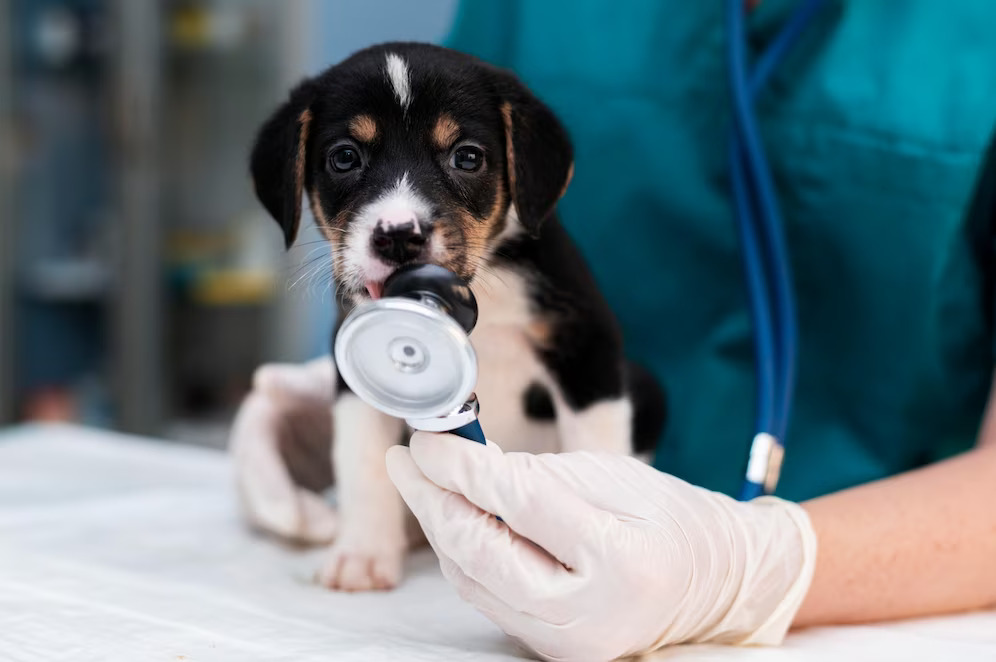
A veterinarian should regularly examine your pet. It is recommended to take your puppies to a vet monthly, adult pets – annually, and elderly animals – twice a year. And this is the case if they do not experience health problems. However, some signs should not delay a visit to the veterinarian.
Let’s look at the signs suggesting you should take your dog to the vet immediately.
1. Refusal of food
This’s a judgment call; however, if your dog stops eating suddenly, this can indicate that something is going wrong with your dog. Some pups are a little lazy about food intake than others; thus, you understand your pet best and pay close attention to its eating habits.
A good appetite is one of the main indicators of the health of any living being. But a long-term (more than a day) ignoring food and water is an alarming and serious indicator that something is wrong with the pet.
Perhaps the animal develops dental disease, and it is physically painful for him to eat dry food. Other options are digestive difficulties, helminth infection, liver disease, urinary tract infection, etc. Only a veterinarian can determine the exact reason for an animal’s refusal to eat, and it is best to contact him as soon as possible.
2. Swollen And Hard Abdomen
Various reasons may cause swollen and hard (or bloated) abdomen in your dog. The reason can be liver dysfunction, heart failure, internal bleeding, uterine infection, or just ‘bloat.’
It is never recommended to ignore symptoms of a swollen abdomen in canines. If your dog shows symptoms of a bloated abdomen, it is time to rush to the veterinarian because it is an emergency.
In case your pup has a swollen abdomen, and you see other signs such as repeated vomiting attempts, pacing, or saliva coming, your pup could be having issues from GDV (Gastric Dilatation & Volvulus), which is even known as “Dog Bloat” or “Stomach Torsion.” Bloated stomach is an overly serious illness that needs prompt veterinary care!
3. Lethargy Or Lameness
If your usually active and cheerful dog unexpectedly does not seem to move around, appears to be always tired, or is unwilling to exercise, there’s almost surely an underlying serious reason behind this. It may suggest your dog’s internal injury that is making your dog unwell or forcing them to show lethargic symptoms.
For instance, reluctance to exercise and lethargy are 2 of dogs’ most familiar symptoms linked to heartworm infestations. It may or may not be trouble unless your pup is in apparent pain, but speaking to the veterinarian is still suggested as soon as possible.
4. Skin or Coat Changes
A qualitative indicator of a pet’s overall health is the skin condition. It should be smooth, slightly pink, or black. But if the skin is flaky, and the animal suffers from itching, this is already a mess.
Visible signs like dull coats, bald patches, and dry skin can be a red flag as these are symptoms of allergies that need medical help. Your vet can determine what’s causing allergies and guide you to help reduce your dog’s distress and help your dog progress quickly.
Your vet can even suggest medicine to help your puppy feel comfortable if you’re trying to know the reason for allergies, as you should avoid giving such foods to your dogs.
5. Vomiting
If a pet vomits once, this can be attributed to the body’s natural reaction to some kind of irritant. But regularly vomiting (once every 20 days or more) is one of the alarming factors.
Most likely, the matter is in parasites, but intestinal obstruction, oncology, gastritis, and pancreatitis are also not excluded. Whatever the reason is, self-medication is not recommended. Like food refusal, vomiting is a reason to contact your veterinarian immediately.
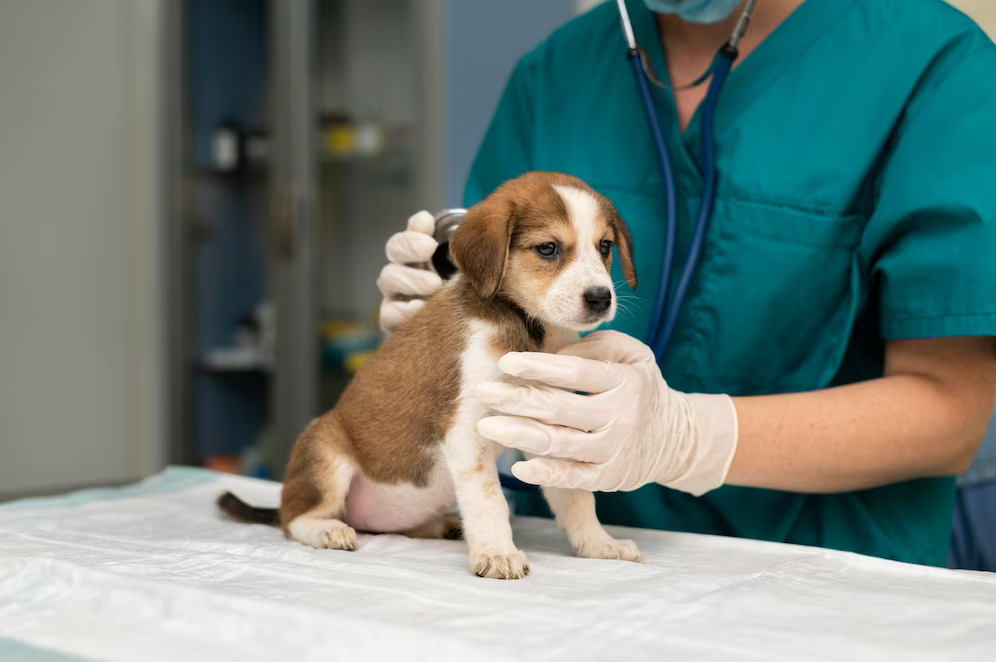
6. Diarrhea Or Digestive Issues
Though it can have various reasons, diarrhea is frequently a symptom of digestive system diseases. Watery diarrhea in large amounts is frequently accompanied by hypersecretion, a disease in which extra fluid is generated into the intestines. A bacterial infection may be the reason for this.
Malabsorption, or the inability to absorb nutrients effectively, can induce diarrhea. A problem with the gut cells that control absorption is the cause of malnutrition. Many viruses can cause this syndrome.
Diarrhea or loose stools can be because of intaking human foods or a hot day. So, whenever you notice anything like that, immediately take your dog to the vet. However, do not forget to put on dog pants before taking your dog to the vet when your dog is suffering from diarrhea.
7. Cloudy Eyes or Red Eyes Or Watery Eyes
Red, watery, cloudy eyes, winking, or extreme discharge from your pup’s eyes could mean an injury or infection. Ensure you take your pup for a checkup immediately. Diseases impacting the dog’s eyes can rapidly progress and even cause blindness.
So, do not delay taking your dog to your vet as soon as you notice cloudy or red eyes or excessive discharge.
8. Unusual Stool
Your pup’s stool type is a good sign of their general health condition. A healthy pup will have moist, firm, and small stools. Hard, dry stools can be a symptom of health disorders, dehydration, or dietary problems. Take your pup to the veterinarian in case he shows any of the following signs:
- Diarrhea for over eight hours
- Worms in the hard stools or moist stools
- Mucus or blood in the dog’s stool
- Straining
- Dogs’ vomit
This shows that your dog is not healthy. You should take your dog to the vet as soon as possible.
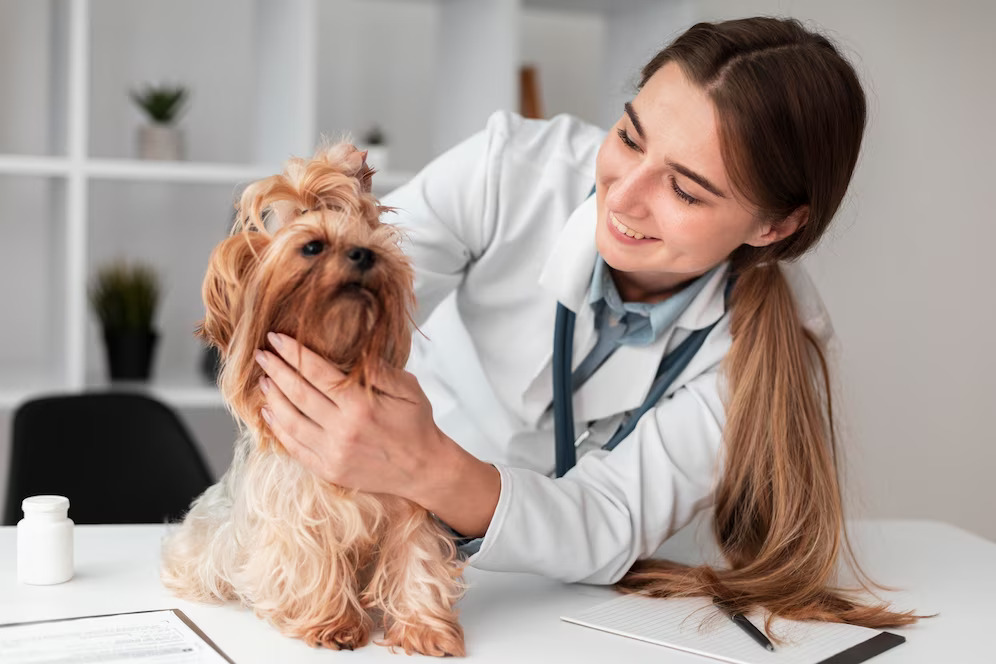
9. Excessive Thirst
Based on your dog’s previous activity or recent exercise and the weather, your dog may be drinking more water than usual. If the increased thirst and drinking last longer than a day, it can also be a sign of diabetes or indicate kidney disease.
Call your vet right away, In case you fill your dog’s water bowl more quickly than normal. It can be because of various reasons.
10. Aggressive Behavior
Any slight changes in your pet’s behavior indicate a problem. Your dog may be grumpy when they aren’t feeling well, just like you might.
If your dog starts to grumble, bark, or walk more frequently, it might not just be a behavioral issue. That can be a symptom that your dog is sick. Because dogs sometimes can’t communicate when they’re not feeling well or are in discomfort, you must ensure there isn’t an issue causing such changes in your dog’s behavior.
11. Unusual Behavior
Other changes in the pet’s behavior also indicate a likely serious health condition. For example, your dog loses its cheerfulness, hides from you for no reason, does not allow it to be touched by anyone, or runs around the house for no reason. In general, it does not behave as usual.
The following situations are also potentially dangerous: the pet can’t stand on its paws or is bored, it is disoriented, suffocating, it has convulsions, etc. These symptoms are already related to problems with the central nervous system. If you notice them in your pet, contact your vet immediately.
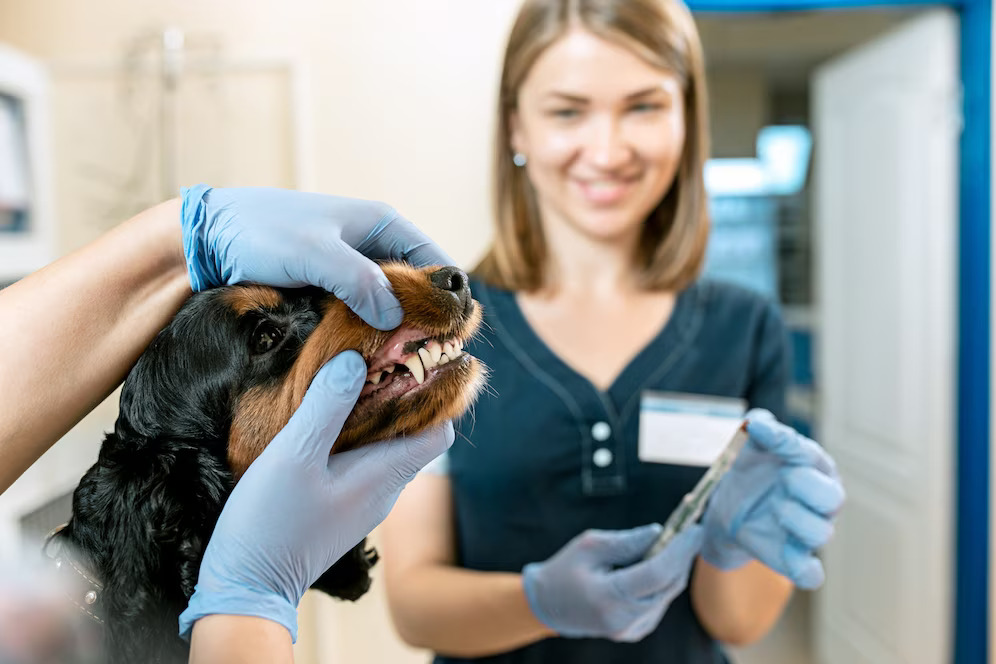
12. Sudden Weight Loss
It is necessary to ensure that the dog does not overeat. You should control the weight of the pet and especially pay attention to its unreasonable weight loss. If the animal continues to lose weight within a couple of weeks, you need to contact a specialist.
There are many reasons for weight loss: parasites, ailments of the liver or thyroid gland, problems with the pancreas, or chronic diseases of the digestive system.
13. Breathing Difficulties
Naturally, breathing problems should always be treated as an emergency and necessitate a trip to the veterinarian, day or night. The symptoms of breathing problems can include choking noises, wheezing, and evident distress, indicating you to contact an emergency vet immediately.
The most frequent causes of respiratory problems in dogs include severe allergic reactions, lung infections, heart disease, and objects stuck in the throat. Call your emergency veterinarian immediately if you think your dog may have breathing problems or other symptoms like that.
14. Eating Too Much
If your dog starts eating too much all of a sudden, then you should pay attention to that, also. Overeating generally means overweight dog. And since overweight dogs generally are more prone to diseases and other issues, it is better to seek your vet’s help to prevent your dog from overeating.
15. Inability to Urinate
The inability or unwillingness to urinate may indicate bladder infections or something more serious. While bladder infections can be highly uncomfortable for canines, they are not life-threatening. But, your dog’s inability to urinate could indicate that bladder stones have blocked your dog’s urinary tract.
There’s a high chance that your pet is in discomfort and needs emergency veterinary attention if they are unable to urinate. As soon as you can, get in touch with your vet or an emergency veterinarian.
How Can You Tell If A Dog Is Serious?
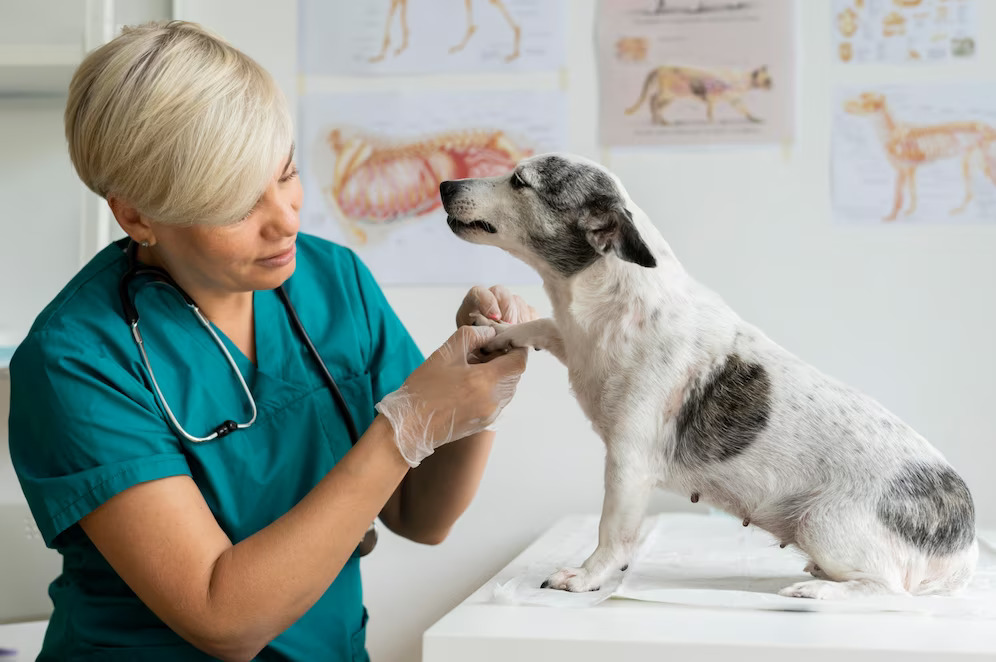
You need to seek prompt medical help from your vet or an emergency vet clinic in case your pup shows any of the symptoms mentioned below:
- Open wounds need immediate medical attention.
- Broken bones, sore muscles, or injury because of incident or trauma. Even if your dog appears fine after an incident, it is better to take it to the vet as soon as possible.
- Unconsciousness or stopped breathing or breathing difficulties.
- Seizure
- Bleeding from the nose, mouth, or eyes
- Sudden difficulty breathing or collapse
- Possible poisoning due to eating something toxic
- Retching and attempting to vomit, but no food comes up (a sign of bloat)
- Repeated vomiting for more than 1 hour or if you notice vomiting blood.
- Swollen and hard abdomen
- Extreme pain showed by shaking or whining.
- Labored breathing or difficulty breathing & bleeding
- Inability to urinate
- Ingestion of poisons such as poisonous plants, chocolate, sugar-free foods with xylitol, raisins or grapes, rat poison
- Sudden disorientation
- Not able to stand, dragging or wobbliness of limbs
- Behavioral problem
- Pale gums
About your pup and breed, your veterinarian may want to add more items to this list or provide clarity to you. Remember that you are the expert on your dog’s routines, habits, and behaviors. Listen to your instincts and contact your veterinarian if you have any concerns.
How can I tell if my dog is in pain?
Always treat your dog’s pain as an emergency! Do not allow your dog to suffer unnecessarily if showing clear signs of pain like panting, vocalizing, drooling, or a severe limp. Take your dog to the vet if they are in pain.
Final Words
If your dog shows any of the following symptoms or non-emergency signs and you’re still debating whether or not to take him to the vet, listen to your instincts. No one else but you know your dog the best. Because unexpected changes can be unsettling, as soon as you see even the slightest change in your dog, act promptly and contact your vet ASAP!
A trip to the veterinarian can put you at ease. Nobody likes to see their cherished pet in discomfort, so your veterinarian will offer advice on how to make your pup feel better and ensure there are no underlying medical issues you should be concerned about.
How can I tell if my dog is in pain?
In case your pup is in distress, it may display the following symptoms:
Cry out, growl, or yelp
Whining and shaking hard
Show agitation
Become grumpy or snap at you
Limp or may be unwilling to walk
Be less active, quiet, or may hide from you
Have breathing changes and an expanded heart rate
Stop eating
Become depressed
Show signs of excessive thirst
How do I know if my dog is asking for help?
Your dog may be telling you it is in pain and needs assistance if you notice him biting, licking, or grooming a particular area of his body either more frequently than usual or for a longer duration than usual. To bring the pain under control, look around for any wounds and, if necessary, take him to the vet.
